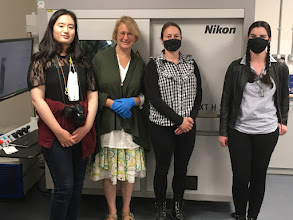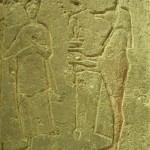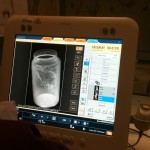At the Ure Museum we’ve been celebrating Heritage Open Days for a long time: our events usually included opening the museum on a Saturday and hosting activities for adults and families, but during the pandemic we had to go virtual. Thus, in 2020, we launched a much-successful series of short videos created by our staff and our colleagues at the Department of Classics on ‘9 lives of the Ure’s mummified cat’s head’. You can watch the videos here. You can read more about it in one of our previous blogs.
Our approach received great feedback and thus, we decided to hold our 2021 HOD Events virtually once again. In addition, our museum was just reopening in September with a much-anticipated joint exhibit with the British Museum, and we preferred those two events not to clash. If you missed our British Museum Spotlight Loan or if you wish to visit it again, please follow the link for an online version of it: https://collections.reading.ac.uk/ure-museum/https-collections-reading-ac-uk-ure-museum-troy/
This year’s HOD theme was “edible England” and reminded us of the importance of food – well more than food itself, of the habit of eating and drinking together – in antiquity. Through a series of videos by our members of staff who have examined the relevant area of research from various points of view, we explored ancient diet, depictions of food in our collections, how people used to share food with gods (sacrifices and libations) and their communities (banquets), how important food was in funerary contexts, and even created cook-along videos to eat like an ancient Egyptian, Greek or Roman. All videos are available on our YouTube channel and website https://collections.reading.ac.uk/ure-museum/home/whats-on/hod-2021-eat-pray-love-in-antiquity-at-the-ure-museum/
 Poster of the event, provided by Dr Claudina Romero Mayorga
Poster of the event, provided by Dr Claudina Romero Mayorga
Although museums and galleries have noticed certain virtual fatigue in the last months of lockdown, people were becoming more and more anxious to visit the real places and interact face to face, and thus, we can happily claim that our virtual HOD was a success! We had 412 views on our YouTube channel and our webpage visits increased a 84%; most of our audience came from the UK, but also from USA, Singapore, Australia and Europe!
It’s amazing how food – a topic that engages most of our senses – can be addressed from afar: by evoking the smells of burnt meat in a sacrifice, the delicious fragrances of baked pastelis, panis focaccias and cakes, the strength and energy provided by Spartan dishes, the beautiful representations of Egyptian food and Greek fish plates, all accompanied by sweet Greek wine. Let’s toast for more opportunities to come together.
The event was organised and held by the team of the Ure Museum under the guidance of the Curator, Prof. Amy Smith, and the Education Officer, Dr Claudina Romero Mayorga.
In fact, this year’s HOD topic was a great match for our Department’s long and strong record of research on the field of food archaeology. We are delighted to have been the academic home for various projects, among which an outstanding position is occupied by the work of Dr Jessie Feito, whose doctoral thesis focussed on the relevant area of expertise. Dr Feito was recently awarded her PhD by the Department of Classics at the University of Reading under the supervision of Prof. Annalisa Marzano, and she has been accepted as a postdoctoral fellow in…
Dr Feito has kindly provided us with a short introduction and summary of current research trends in food archaeology. We are truly thankful to her for sharing her knowledge, and we wish her all the best in the new and exciting steps of her career.
Recent decades have seen a notable increase in interest in the archaeology of food. Food was, and is, more than just a means of achieving the necessary caloric intake for survival; it had social and political significance in antiquity and was highly important culturally and economically. Food is at once a necessity to all, while also being unique to particular peoples and populations, shaped by preferences and cultural practices. This makes the study of food an exceptionally interesting and versatile research topic.
 PhD students at the field. Picture retrieved from https://www.reading.ac.uk/classics/phd/department-life-for-phd-students. Dr Jessie Feito is at the front.
PhD students at the field. Picture retrieved from https://www.reading.ac.uk/classics/phd/department-life-for-phd-students. Dr Jessie Feito is at the front.
Scholars of the ancient world have explored food and dining habits in a variety of ways. Ancient literature describes food and dining events with texts such as Petronius’ Satyricon, for example, satirising lavish Roman dinner parties, and Apicius’ De re coquinaria providing a glimpse into recipes used in antiquity. Archaeological evidence also offers significant insight into dietary practices. This can be in the form of structural remains of kitchens and dining rooms, such as those famously preserved at Pompeii, or in artistic representations of food and dining in frescoes as well as in mosaics. Ceramics and vessels associated with food preparation and consumption can reveal how meals were cooked and eaten, while the remains of transport containers such as amphora, can shed light on the production and transport of important commodities such as wine, olive oil, and garum. Archaeologists also study the remains of the foodstuffs themselves: zooarchaeology, or the study of animal bones, can be used to explore the consumption of animal products and archaeobotany focuses on the plant remains.
My research utilises the latter, examining plant remains in order to explore food production and consumption in two parts of the Roman world: Italy and the Near East. In using regional case studies, I am able to explore the ways that the Roman Empire impacted diet and agricultural practices in regions of different historical, socio-cultural, political, economic, and even environmental contexts.
The potential for archaeological evidence to shed light on food in the ancient world is vast, and, despite the significant advances that have been made, there is certainly room for our understanding to be improved with further research—this only serves to makes the archaeology of food more exciting! We now know that while dietary practices and preferences varied across the ancient world, just as they do today, the importance of food was universal.










 shire Museum in Woodstock
shire Museum in Woodstock




